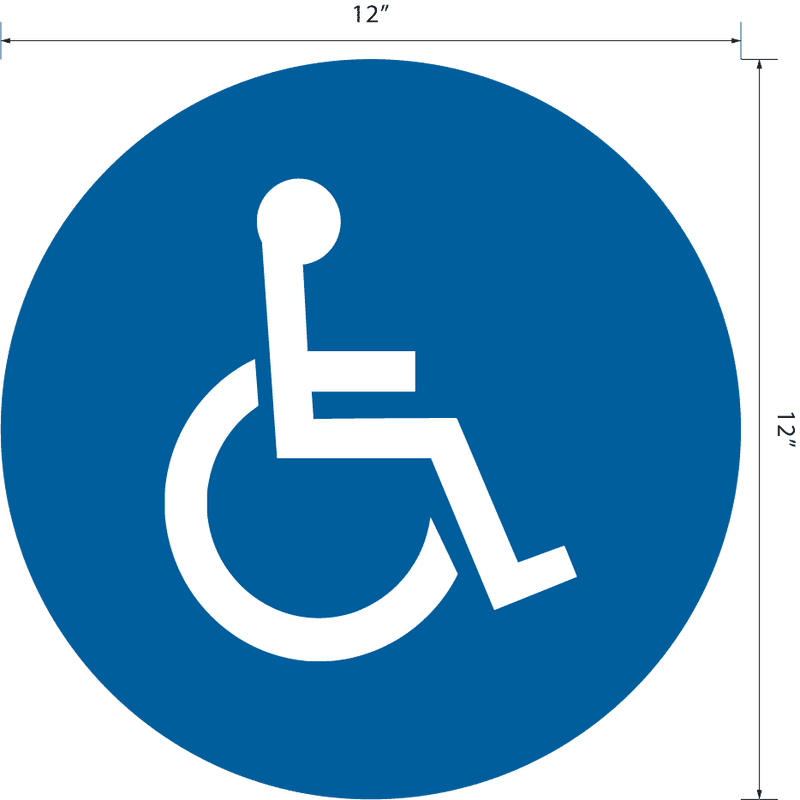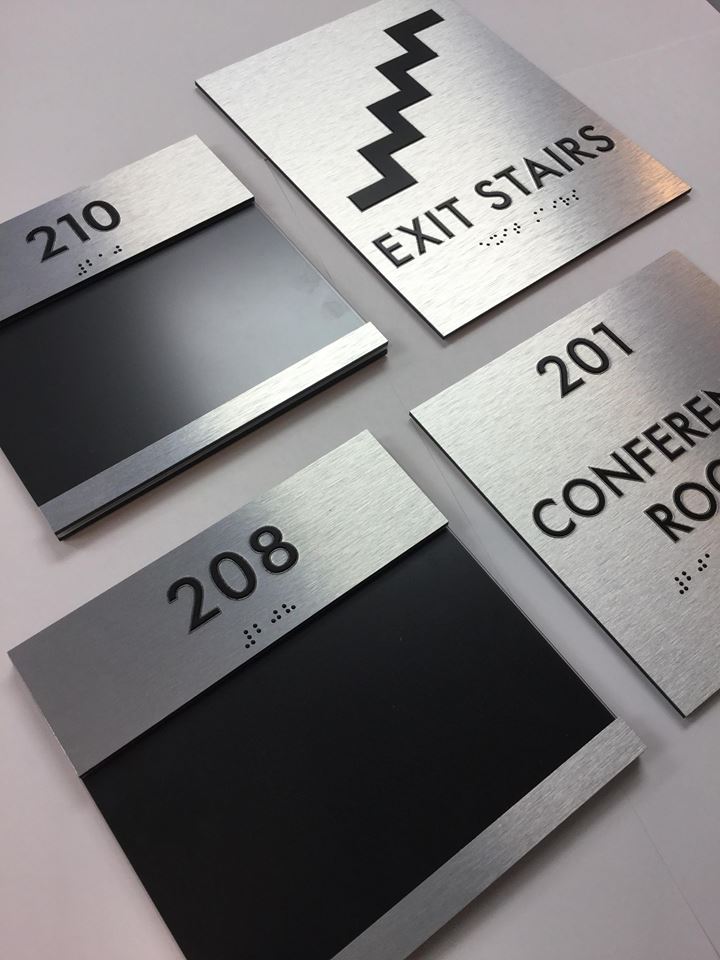Discovering Imaginative Layouts for Reliable ADA Signs
Discovering Imaginative Layouts for Reliable ADA Signs
Blog Article
ADA Signs: Making Certain Accessibility and Compliance in Public Spaces
ADA signs plays an essential role in ensuring ease of access and compliance within public spaces, substantially contributing to a comprehensive atmosphere for individuals with impairments. As we discover the subtleties of ADA signage, from responsive attributes to make intricacies, it's crucial to consider just how these components coalesce to support the legal rights of all individuals.
Value of ADA Signage
In modern culture, the value of ADA signs expands beyond plain conformity with lawful requireds to personify a dedication to inclusivity and availability for all individuals. These signs are essential in creating environments where people with disabilities can navigate public areas with the very same convenience and self-reliance as those without disabilities. By providing clear and standardized info, ADA signage makes sure that everyone can access centers, solutions, and info without barriers.
The value of ADA signage hinges on its capacity to improve the lifestyle for individuals with handicaps by promoting equal accessibility. It removes the obstacles that may otherwise hinder their capacity to get involved completely in community life. Additionally, these signs serve as noticeable signs of a company's dedication to diversity and equal rights, mirroring more comprehensive societal worths that champion the civil liberties and self-respect of all individuals.
In addition, ADA signs plays a critical role in public safety. By assisting people to departures, restrooms, and other vital facilities, it makes certain that all individuals, despite physical capability, can evacuate securely throughout emergency situations. In recap, ADA signs is not simply a governing demand yet an effective device for promoting a equitable and inclusive culture.
Key Elements of Compliance

Positioning is crucial; indicators need to be installed in places that are easily noticeable and reachable. Generally, signs ought to be placed in between 48 and 60 inches from the ground to guarantee ease of access for both standing and mobility device individuals. Tactile components, such as Braille, are necessary for people with aesthetic problems, supplying vital details in a non-visual format.
High-contrast shades between the message and background are required to improve readability for individuals with low vision. The ADA mandates certain comparison proportions to guarantee quality. Furthermore, character dimension is an essential factor to consider, with minimal elevation requirements dictated by the viewing distance to ensure readability from various angles.
Style Factors To Consider for Ease Of Access
Designing accessible signs needs a careful strategy to ensure it meets the requirements of all customers, particularly those with handicaps. This involves thinking about different design elements that enhance readability and functionality. Trick elements consist of the choice of font, shade contrast, and tactile features. Font styles need to be sans-serif, with clear and basic letterforms, to assist in simple reading. The size of the text is equally critical, with ADA guidelines recommending a minimal elevation based on seeing distance to make sure readability.
Contrasting colors between message and background are essential for presence, particularly for individuals with aesthetic disabilities. Furthermore, tactile components, such as Braille and elevated characters, are vital for people that are blind or have reduced vision.
Moreover, the positioning of signs plays a significant duty in ease of access. Indicators must be installed in areas that are unobstructed and quickly obtainable. Guaranteeing that signs is mounted at appropriate elevations and angles allows all individuals, consisting of those making use of mobility devices, to communicate with them effectively.
Usual Errors to Stay Clear Of

Another common mistake is the wrong positioning of signs. ADA standards specify exact height and place needs to guarantee that signs are easily visible and reachable by all people, including those using wheelchairs. Ignoring these standards not just hampers ease of access yet likewise risks non-compliance with lawful standards.
Furthermore, not enough contrast in between message and history is a constant oversight. Adequate comparison is vital for readability, especially for people with reduced vision. Designers in look at this now some cases pick shades that are visually appealing however lack the necessary comparison, providing the message difficult to determine.
Lastly, some developers fall short to integrate responsive aspects, such as Braille, which are critical for people that are blind. Leaving out these features not just leads to non-compliance with ADA laws however additionally restricts accessibility for a sector of the populace that depends on tactile info.
Future Trends in Signs
Developments in modern technology and enhancing awareness of inclusivity are forming the future patterns in signage design. Digital signs, for circumstances, is progressing to include interactive features and real-time updates, which can be important in offering vibrant information in public spaces.
An additional arising trend is the usage of enhanced truth (AR) to boost user experience. AR-enabled signage can overlay digital information onto the physical setting, giving this content aesthetically damaged people with auditory or haptic responses. ADA Signs. This innovation not only boosts availability yet additionally develops an interesting experience for all individuals
Sustainability is additionally a considerable variable affecting signage patterns. Green materials and energy-efficient lighting services are being prioritized to align with global ecological goals. Developments in products science are leading to the advancement of even more durable and weather-resistant indicators.
Final Thought
ADA signage plays an essential function in ensuring accessibility and conformity within public spaces by incorporating tactile components, high-contrast shades, and critical placement. The adherence to ADA standards not only facilitates safe navigation for individuals with impairments however additionally indicates a company's devotion to variety and inclusivity. By avoiding common mistakes and welcoming future fads, public areas can remain to progress these values, making certain that the legal rights and self-respect of all people are valued and promoted.
ADA signage plays a vital function in ensuring accessibility and compliance within public spaces, significantly contributing to a comprehensive environment for individuals with impairments. As we discover the subtleties of ADA signs, from tactile functions to create complexities, it's vital to take into consideration exactly how these aspects integrate to copyright the legal rights of all users.In modern culture, the significance of ADA signage prolongs beyond simple compliance with legal mandates to personify a dedication to inclusivity and access for all people. By supplying standard and clear information, ADA signage makes sure that everyone can access centers, solutions, and info without obstacles.
ADA signage plays a crucial duty in ensuring accessibility and conformity within public areas by incorporating responsive components, high-contrast shades, and critical positioning. (ADA Signs)
Report this page